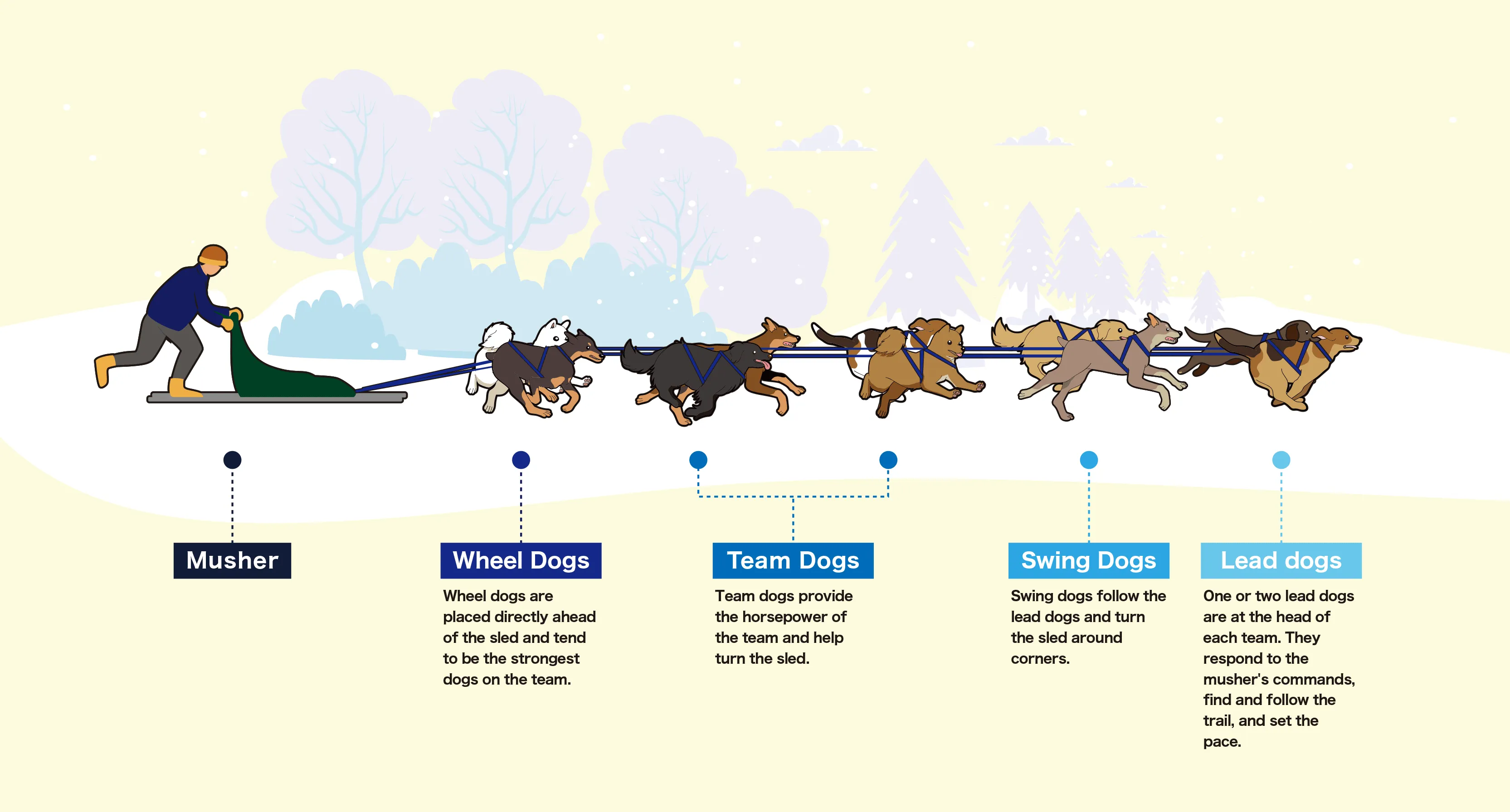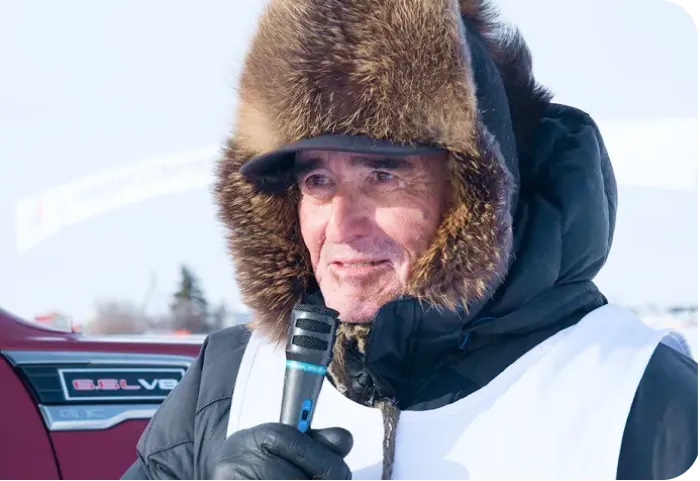
Grant has been racing since he was 9 years old and has competed in and won many of the world's most prestigious dog sledding competitions.
races in the Spanish Pyrenees, the French, Swiss, and Italian Alps, and of course, races across North America.
Grant has been racing since he was 9 years old. For five generations, Grant's ancestors used dogsledding as a way of life.
Grant's ancestors have lived with dogs for five generations, using dogsledding as a way of life. In those days, the police patrolled by sled dogs and hunters hunted by sled dogs.
In those days, police patrolled by dogsled, hunters went hunting by dogsled, and families traveled by dogsled for the same purposes as they do by car today.
In those days, dogs were a very important means of transportation in extremely cold and snowy regions.
Today, Alaskan Huskies bred for racing are the main breed, and here at Becks Kennels we have about 100 racing dogs.
Alaskan Huskies are very patient and have a lot of patience. Alaskan Huskies are patient, endurance, intelligent, friendly, cold-tolerant, and athletic. The dogs are jumping and barking before the tour.
The jumping and barking of the dogs before the tour is their way of showing that they want to run.
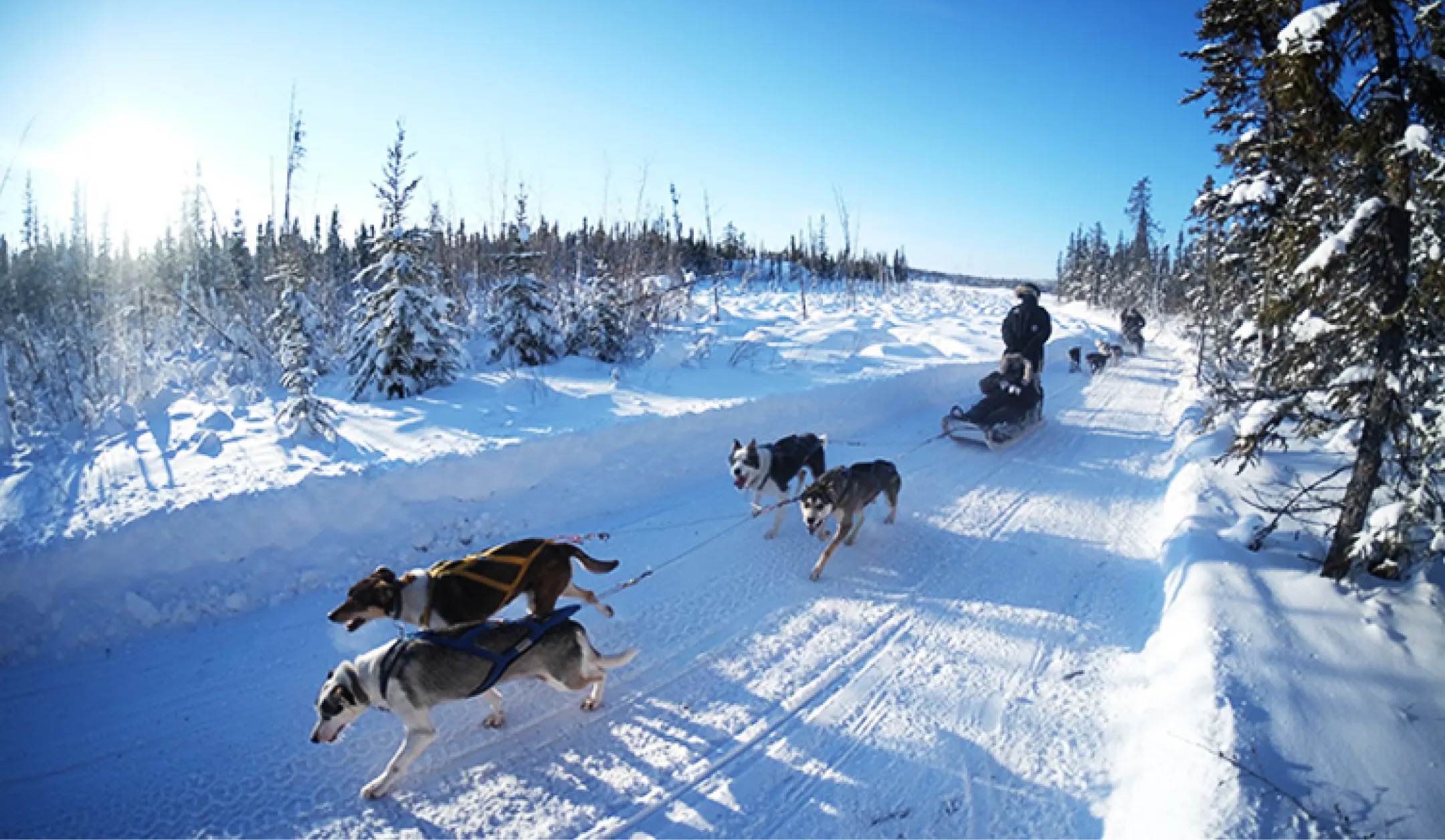
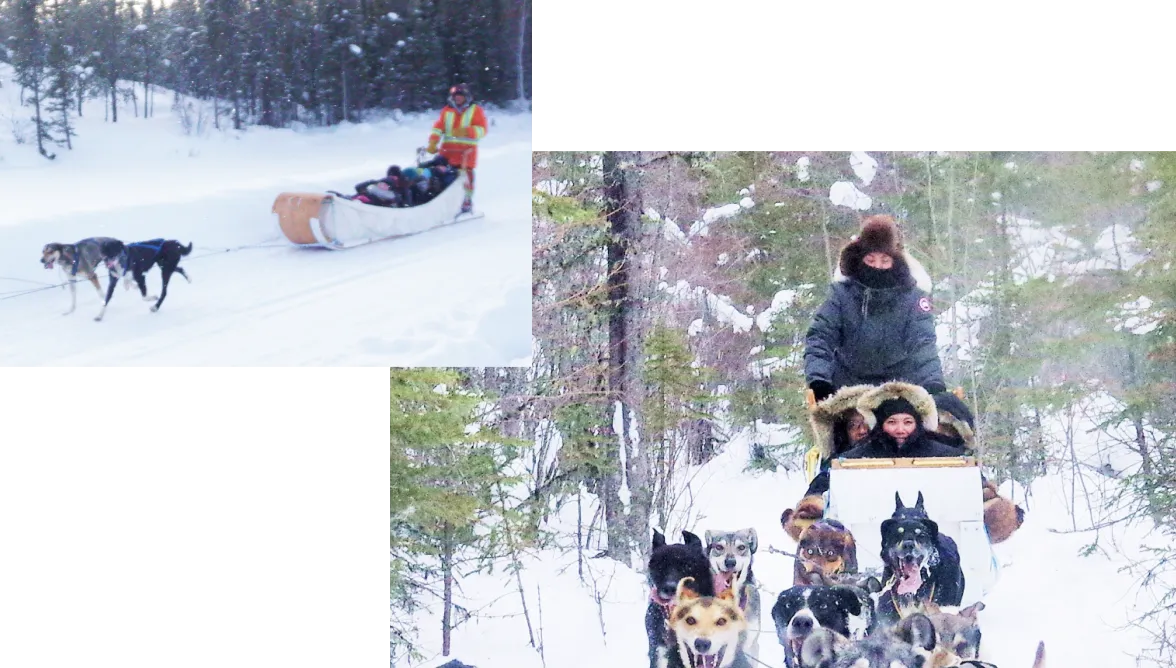
The dog sledder is called a "musher" and controls the sled by understanding the personality and abilities of each dog.
and controls the sled. The right "Gee" and the left "Haw" give direction to the leader.
The leader gives direction to the dogs with "Gee" on the right and "Haw" on the left.
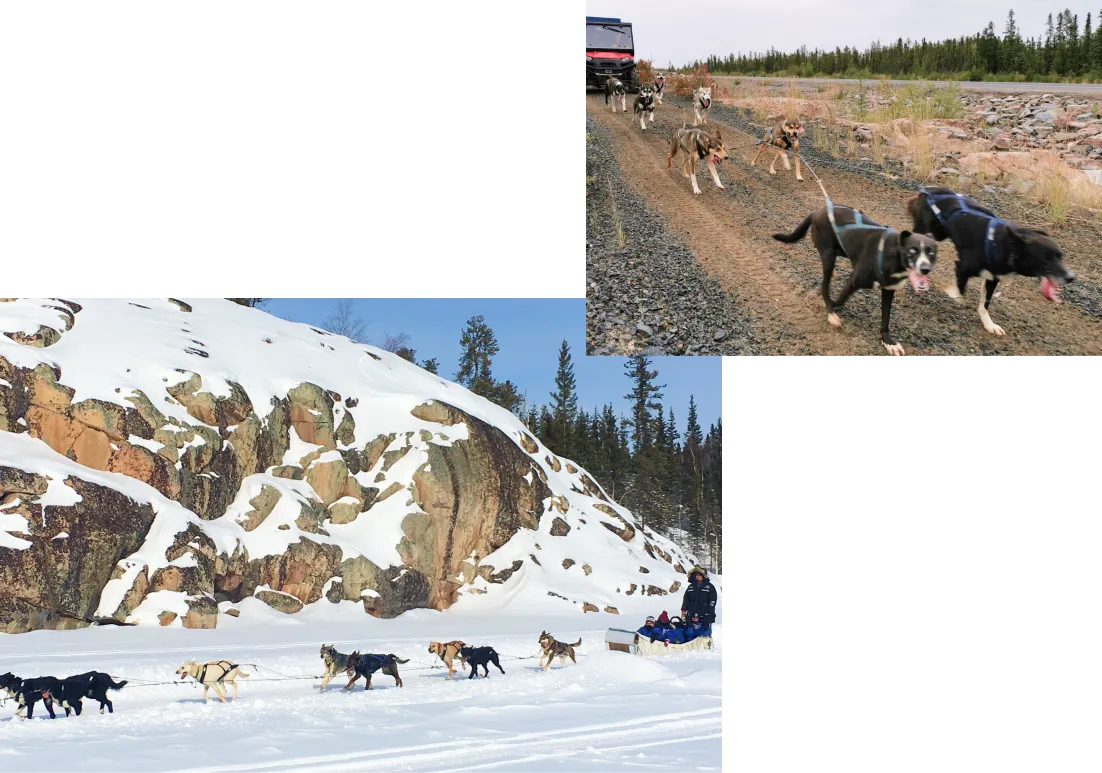
Training on land begins in mid-August when the temperature begins to drop, and full-scale snow/ice training/tours begin in November.
In November, the full-scale training/tours on snow/ice begin. After several months of training
After several months of training, selected dogs compete in races held in the U.S./Canada from January to March each year.
The dogs are selected after several months of training and compete in races held throughout the U.S./Canada from January to March.
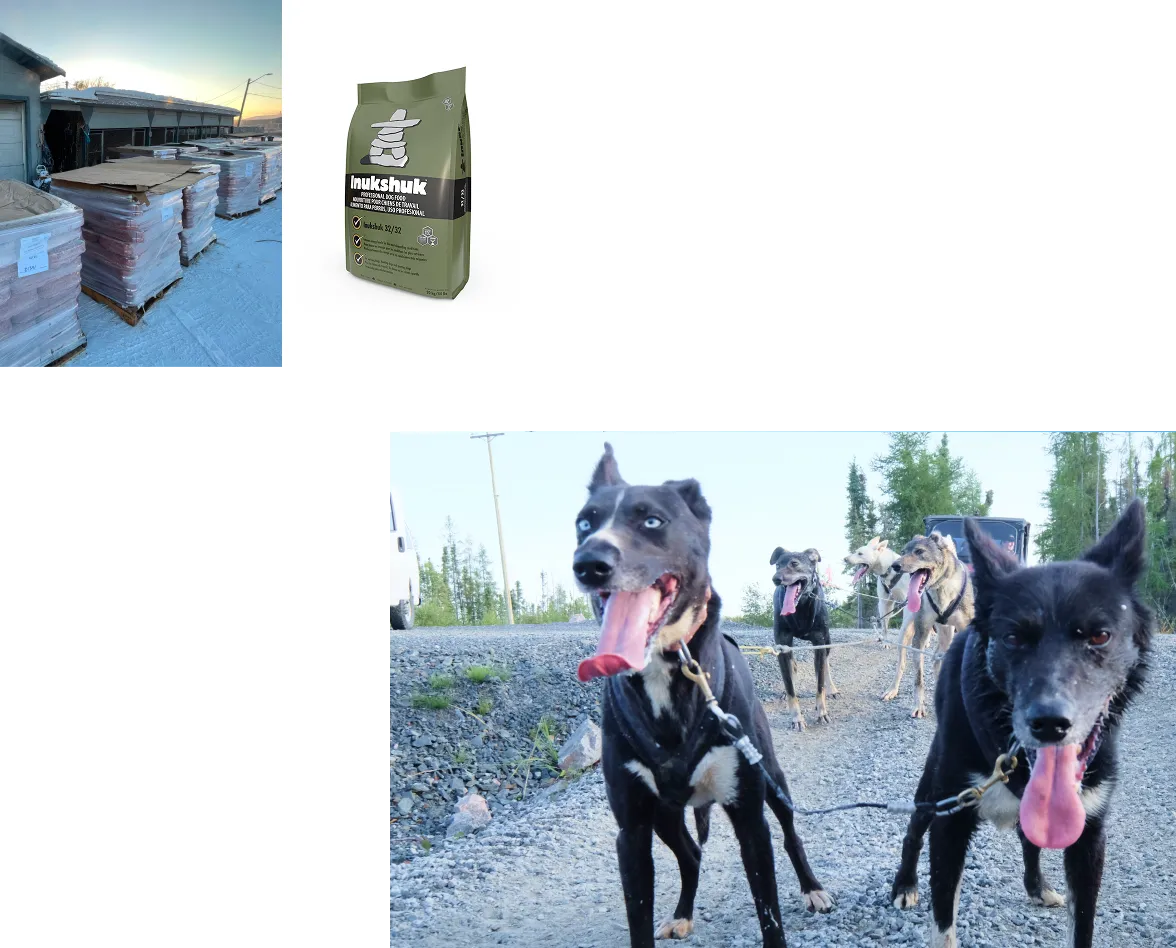
The dogs are fed a high-calorie food (Inukshuk) specially formulated for racing dogs, which burns 8,000-12,000 calories per training session. The dogs are also fed a mix of fish, chicken, and beef. The dogs may look skinny, but they are not.
They may look skinny, but they are marathon runners in human terms. They are athletes with very little body fat, mostly due to their well-trained muscles.
Leader of the first two horses: Listening to the musher's support, adjusting speed, changing direction, etc.
The leader controls all aspects of the team, including speed adjustments, direction changes, etc.
First deputy leader, almost equal to the leader, is trained to be able to switch positions during the race
They are trained to be able to switch positions as leaders during the race.
They support the center of the team and balance the team as a whole.
Wheel Dogs need to be strong and able to control the sled. The entire team must be placed in order of smartest and fastest from the front.
The team as a whole is made up of the smartest and fastest dogs in the front, and the further back they go, the stronger they need to be.
